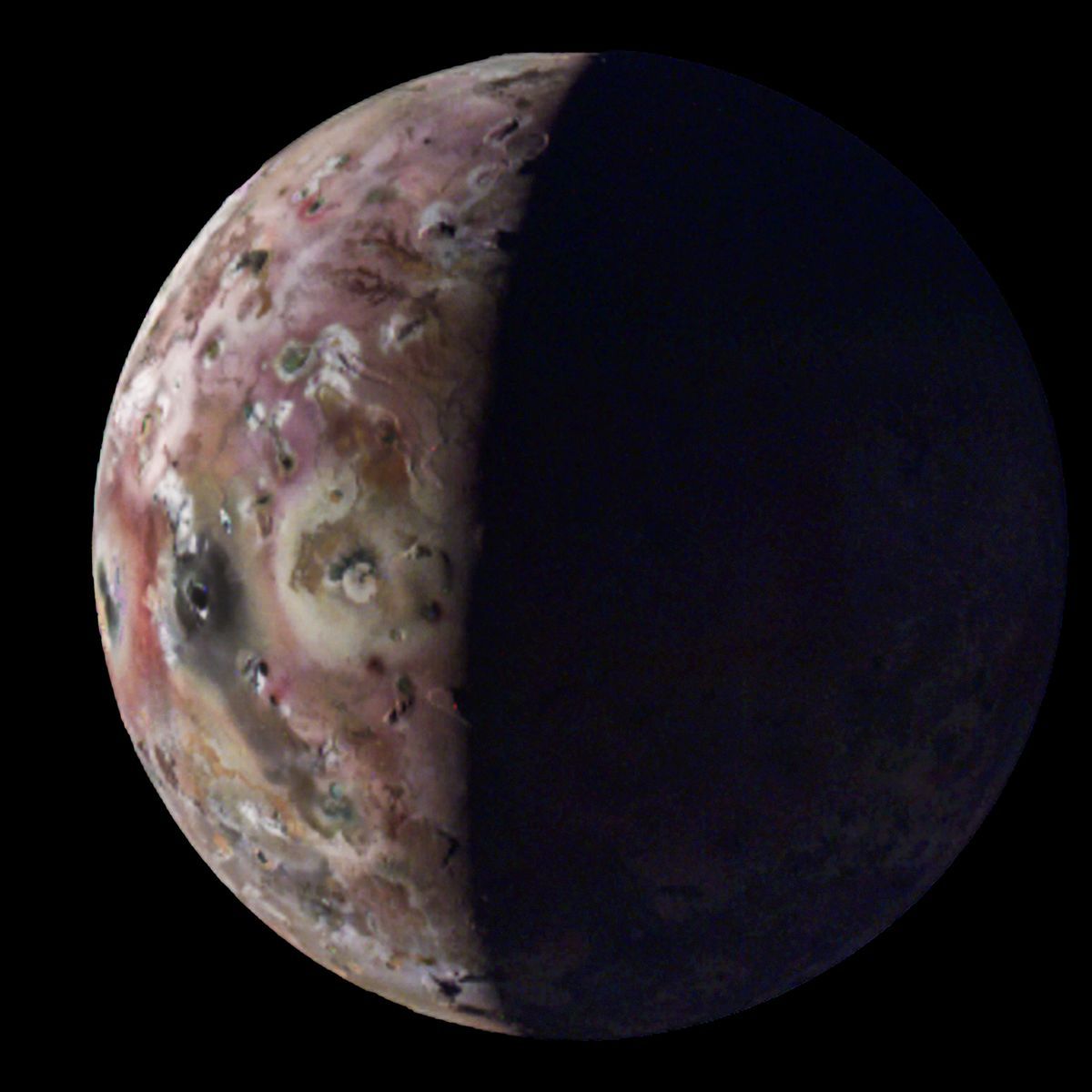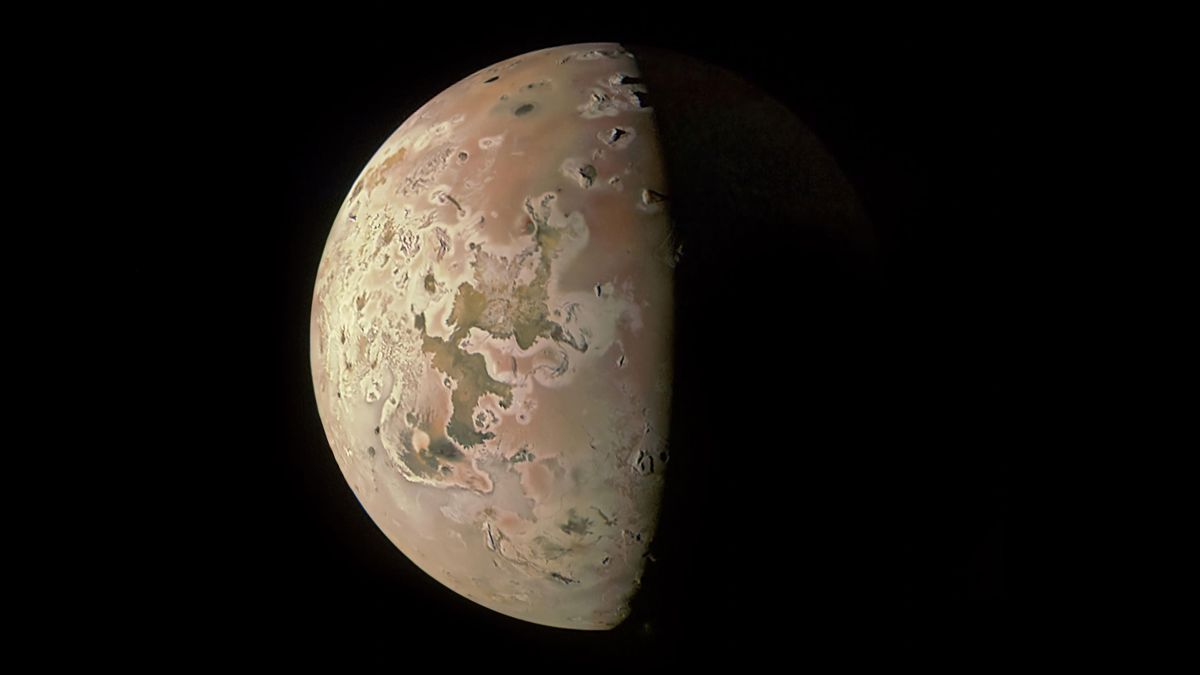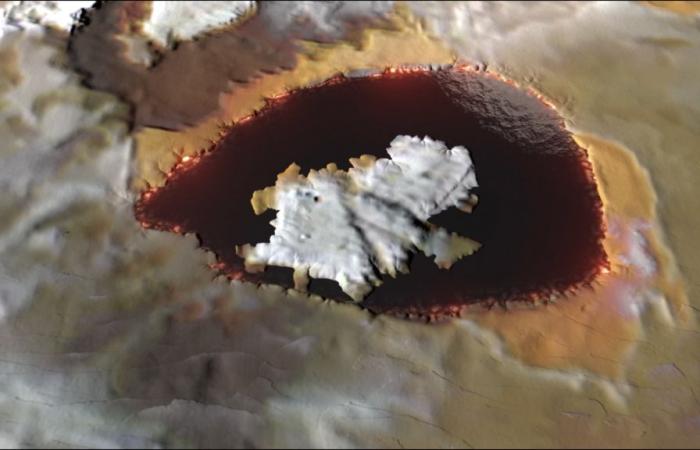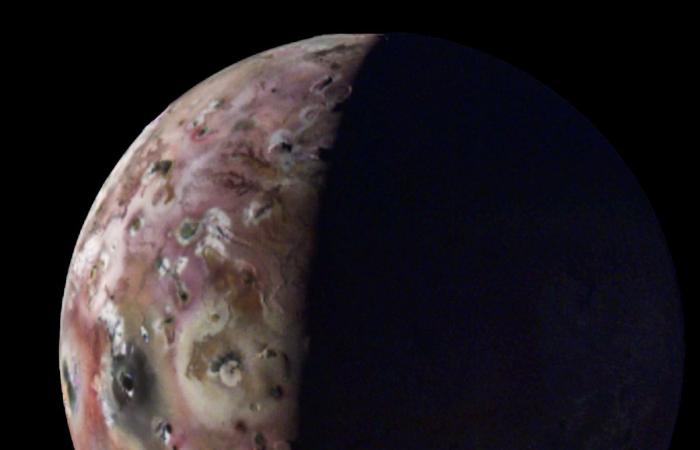Jupiter’s moon Io is the most volcanically active world in the Solar System. In December and February, the probe of the American space agency NASA Juno flew past it and sent detailed images of the body to Earth.
Juno approached the moon at a distance of about 1,500 kilometers from its surface, making it the closest flyby of a body from Earth around Io in the last 20 years.
For example, the probe recorded a place called Loki Patera. It is a lava lake. What is remarkable about it is that in the middle of an unusually hot surface (several thousand degrees Celsius) there are islands, which, according to the assumption of scientists, are, on the contrary, very cold, just like the crust surrounding the lake, as described by the American station CNN.
An animation composed of data from the Juno probe shows a lava lake called Loki Patera on the surface of the moon Io.Video: NASA
“When the magma erupts after a volcanic eruption, it immediately freezes and probably forms sulfur snow,” explained Scott Bolton, lead researcher for the Juno moon at the Southwest Research Institute, about how things work on Io’s surface.
“We obtained excellent close-up images and other data of a 200-kilometer-long lava lake called Loki Patera… The specular reflection of the lake recorded by our instruments suggests that parts of Io’s surface are smooth and resemble volcanically formed obsidian (volcanic) glass on Earth,” he said. the importance of the new images of Bolton.
Astronomers hope to use data from the Juno probe to better understand Io’s volcanic dynamics.
The team converted some of the data obtained from the Juno probe into animations that zoom in on the surface structure of Lake Loki Patera and Steeple Mountain. Juno detected the mountain using sunlight hitting the moon’s surface. Dramatic shadows then revealed a very sharp peak of the formation.
“It may not be completely accurate, but this is what it might look like if we were walking up Steeple Mountain,” Bolton added.Video: NASA
There are more than 400 active volcanoes on the surface of the moon. Eruptions on the surface create clouds of sulfur and sulfur dioxide that reach heights of up to 500 kilometers. Sulfur and sulfur dioxide also cause the color of the moon.

Photo: NASA/JPL-Caltech/SwRI/MSSS / Image processing: Gerald Eichstädt/Thomas Thomopoulos, NASA
Io was discovered by Galileo Galilei in 1610. It is the most volcanically active body in the Solar System and, with a diameter of 3,642.6 km, it is the fourth largest moon in the system, slightly larger than Earth’s Moon.

Photo: JPL-Caltech/SwRI/MSSS, Image processing by Ted Stryk, NASA
Juno is an American space probe that flew to the planet Jupiter on July 5, 2016 as part of the New Frontiers program. The image of the probe revealed the north polar region of Io.
Tags: breathtaking view volcanically active world Solar System









